 Animals
Animals  Animals
Animals  Weird Stuff
Weird Stuff 10 Weird Things People Used to Do at New Year’s
 Our World
Our World 10 Archaeological Discoveries of 2025 That Refined History
 Weird Stuff
Weird Stuff 10 Fascinating Facts You Might Not Know About Snow
 Miscellaneous
Miscellaneous Top 10 Things Crypto Was Supposed to Change & What Actually Did
 History
History 10 Huge Historical Events That Happened on Christmas Eve
 Music
Music 10 Surprising Origin Stories of Your Favorite Holiday Songs
 History
History 10 Less Than Jolly Events That Occurred on December 25
 Weird Stuff
Weird Stuff 10 Funny Ways That Researchers Overthink Christmas
 Politics
Politics 10 Political Scandals That Sent Crowds Into the Streets
 Animals
Animals 10 Species That Refused to Go Extinct
 Weird Stuff
Weird Stuff 10 Weird Things People Used to Do at New Year’s
 Our World
Our World 10 Archaeological Discoveries of 2025 That Refined History
Who's Behind Listverse?

Jamie Frater
Head Editor
Jamie founded Listverse due to an insatiable desire to share fascinating, obscure, and bizarre facts. He has been a guest speaker on numerous national radio and television stations and is a five time published author.
More About Us Weird Stuff
Weird Stuff 10 Fascinating Facts You Might Not Know About Snow
 Miscellaneous
Miscellaneous Top 10 Things Crypto Was Supposed to Change & What Actually Did
 History
History 10 Huge Historical Events That Happened on Christmas Eve
 Music
Music 10 Surprising Origin Stories of Your Favorite Holiday Songs
 History
History 10 Less Than Jolly Events That Occurred on December 25
 Weird Stuff
Weird Stuff 10 Funny Ways That Researchers Overthink Christmas
 Politics
Politics 10 Political Scandals That Sent Crowds Into the Streets
10 Awesome, Obsolete Jobs You Didn’t Know You Wanted
Usually, when we hear about old-school jobs, we’re pretty glad that there’s no need for them anymore. No one wants to be a leech-catcher or a plague doctor, after all. The past was a dark, dirty place, and we like to think that we’ve moved on. But there are some absolutely awesome old jobs that you probably had no idea you’d kill to be able to do.
SEE ALSO: Top 10 Ancient Jobs That Sucked Big Time
10Bear Leader
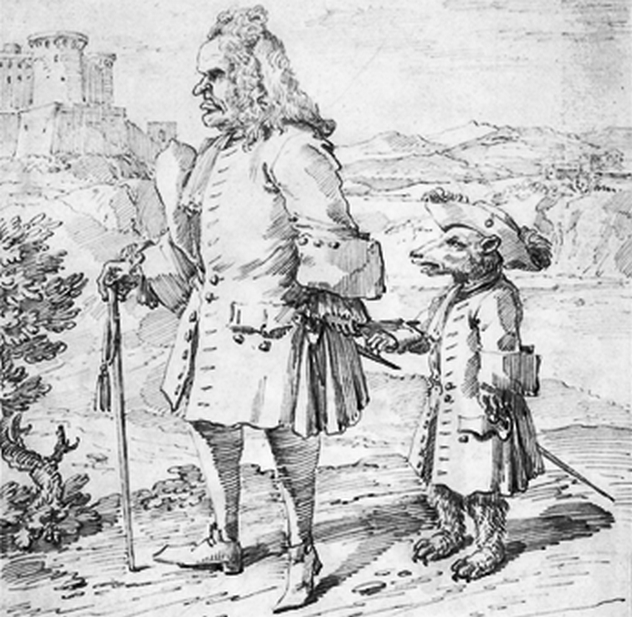
There’re two different types of bear leaders. One was the one you probably think of first, and it wasn’t that nice, because it was—quite literally—a person who led bears. The bears were usually muzzled and not treated that well, taken around from city to town to village, performing for the masses. That’s not the kind of bear leader we’re talking about.
The other kind of bear leader was a tutor, or a sort of old-time chaperone, who accompanied the youth of noble or royal families on their Grand Tour. Using the term “bear leader” was in reference to how much the privileged elite were like trained bears being led around by an older guide. There are plenty of drawings and lithographs depicting exactly that, with the young noble being drawn as a gawking bear on a leash.
The idea of the Grand Tour, where previously sheltered young people would be exposed to the culture of other countries, was in its heyday in the 18th century, and it was no small endeavor. When English nobility went on their Grand Tour, it was often for around three years. They would go through Italy, France, and Germany, hitting all the important historical and religious sites. It was the bear leader’s job not only to teach history, religion, and whatever other practical skills were deemed necessary but also to make sure everyone stayed out of trouble and knew what was—and wasn’t—socially acceptable in all the countries they were visiting.
Just how successful most bear leaders were in keeping their charges out of trouble is up for debate, but who wouldn’t want to spend a few years exploring the European countryside?
9Daguerreotypist
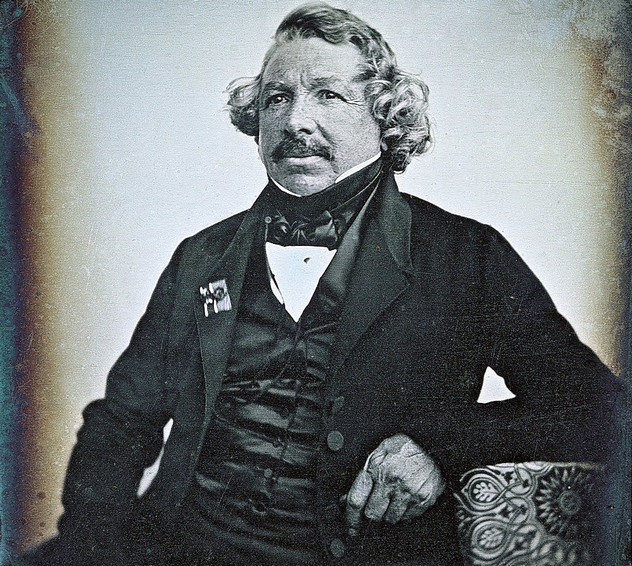
The discovery of photography was no overnight process. In 1839, Louis-Jacques-Mande Daguerre took France by storm with his daguerreotypes, which he named after himself. They were much more than just images; they were printed on silver-plated copper sheets for an almost surreal and three-dimensional appearance. Images were crisp and brilliant and, even today, they look a little magical. Daguerre pitched the brilliance of his invention to both the artistic and scientific communities, and everyone loved it.
By the 1850s, daguerreotypists were performing the procedure on both sides of the Atlantic, and it was a pretty lucrative trade. Those who were really good at what they did had upscale artists’ studios, set up in major cities from London to New York to San Francisco. The daguerreotypists of the time were responsible for documenting a huge portion of history. Mathew B. Brady was at the forefront of the occupation, with presidents sitting for portraits in his studio alongside writers, stage performers, and high-ranking military officers.
While it was sought after by the elite, the process was also incredibly accessible to the masses. Daguerreotypists preserved the faces that would change the world in a long-lasting medium, while at the same time providing family keepsakes, heirlooms, and images for the everyday person. If you’ve ever wanted to preserve the past in a way that lasts longer than a selfie, it’s the career for you.
8Lector

Have a great speaking voice and love to educate people? Try being a lector.
Lectors were employed mostly by cigar factories to keep the monotony from setting in. They would sit in the middle of the room and read just about anything. From books and novels to newspapers, most of them also made a considerable amount more than the people they were reading to. They also held something of an odd position in the factory, looked up to by the workers and a little feared by the owners.
Since most factory workers were illiterate, they got a good deal of their information from the lectors. They would often choose what was being read, which meant that lectors had a huge influence on the people they were reading to. While, for the most part, factory owners allowed them to read whatever they—and their listeners—wanted, it wasn’t unheard of for lectors to be forbidden from talking if the material was a little too revolutionary. That could be a dangerous move for the factory, though, especially if the lector was well liked. Interfere with the lector, and work would slow down, or employees would go on strike.
Throughout the 1920s, workers were beginning to get more organized and more educated, and technology was becoming more accessible. Lectors were gradually replaced with radios, but some continued to read in the streets instead of in the factory.
7Herb-Woman

History is, on the whole, a rather dirty place. Modern amenities like indoor plumbing are a relatively recent thing. Until we figured out how to keep our surroundings clean, we had to do some creative things. If you were royalty, that meant you could afford to employ an herb-woman.
Also called an “herb strewer,” the herb-woman’s job was to distribute fresh herbs, plants, and flowers throughout a residence to keep it smelling fresh. And because they were trusted with working in the private chambers of whatever family they were employed by, these high-profile flower arrangers got to know their royalty well. The post, first established by Charles I in 1660, was a regular part of the royal household until the last herb-woman, Mary Rayner, left in 1836.
George IV seemed to have been particularly fond of herb-women. Anne Fellows, a friend of the king, was appointed herb-woman and led his coronation procession, along with her six attendants. They had all the finery they could want, too, with a written account of the coronation describing in detail her white satin dress trimmed with scarlet and her elaborately elegant headpiece of laurel leaves and grapes. The herb-woman and her attendants also left a trail of fresh flowers behind them for the others to walk on.
6Dahomey Amazon
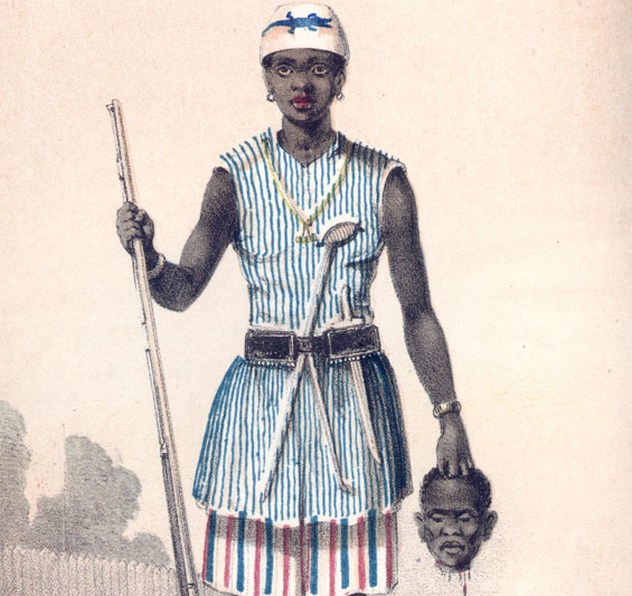
This one’s kind of a give-and-take, and admittedly, you’d have to have a certain sort of mentality to really enjoy your job as one of the elite female soldiers of the Dahomey. But, while the training was rough and the fighting even rougher, the perks more than made up for it.
For a massive portion of history, women haven’t had that many choices that weren’t completely horrible. The third-ranking wives of the Dahomean king Gezo had another option, though. They weren’t considered good-looking enough to actually fulfill their wifely duties, but, according to tradition, they were invaluable in other ways. They were allowed to remain on the palace grounds overnight and were completely devoted to a king they were technically married to but without all those pesky marital relationship problems.
Another tradition says that the female soldiers were originally made up of a group of hunters that had so impressed the king with their skill in taking down elephants that he made them a part of the army. Yet another version suggests that he had no choice but to turn women into soldiers as well as men, so battered was his army. Whatever their origin story, the Dahomey Amazons were epic. Their first official appearance in written historical records was in 1729, when they were involved in a siege of a port city. And by the end of King Gezo’s rule, there were about 6,000 female soldiers, all serving in active combat alongside male troops.
Training was difficult, as the women were forced to endure some hardcore tests of endurance, pain tolerance, wrestling each other, climbing thorny hedges, and hurling prisoners of war into the middle of a bloodthirsty mob. But once you made it, you were golden—and many women scrambled for a place as a soldier, as it was a whole lot better than the life they otherwise faced. The female troops lived in the king’s compound, and each had their own group of slaves that followed them everywhere and catered to their every need. Some had 50 of their own servants, and each was always in the company of a bell-ringer, warning others that an Amazon was approaching and they’d better clear out. Touching one of the women would mean death.
Exactly when the last Dahomey Amazon died has long been up for debate, but it’s thought that some survivors of the final conflict they fought in—against conquering French forces—survived until the 1970s.
5Augur
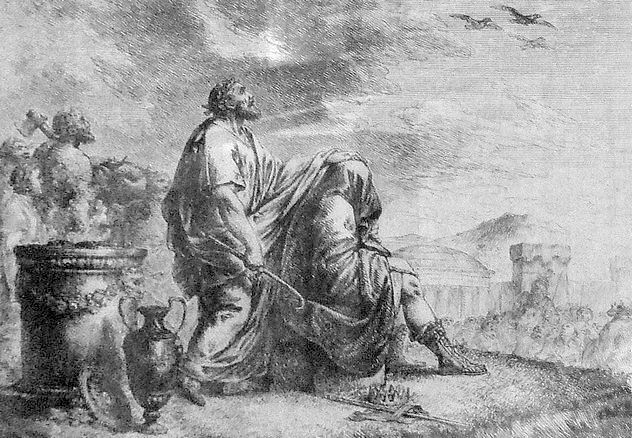
Fancy a bit of bird-watching, along with the opportunity to influence an almost-infinite sphere of affairs? Try being an augur. The “augur” was a term given to a Roman diviner who would read the will of the gods in the flight patterns or songs of the birds. The position was also called the “auspex.” It’s thought that later on, the term “auspex” was used when talking about the actual act of observing the birds, while “augur” was the act of assigning meaning to their actions.
During large sections of history, nothing happened before a diviner was consulted, and that gave augurs enormous power. The argument went that since the gods were known to care for men, they must be sending signs to help them in whatever way they could. Not listening to those that had been blessed with the gift of interpreting the will of the gods was to be nothing less than an atheist, but each nation soon developed their own sort of trademarked method of divination. At the time of the augur, the Romans thought astrology was a pretty risky pastime, but their version of the auspicia was sacred.
The idea of watching birds and telling the future from their flight patterns pre-dates Rome, but Romans were the ones to establish a set of firm guidelines and rules around the practice. Birds were sacred to Jupiter, they were his messengers, and therefore, they were the ones passing along guidance. Ravens and crows were studied by augurs called the “Oscines,” who listened to their calls and interpreted their speech, while the flight of eagles and vultures was studied by the “Alites.” Military matters were up to the auspices who read the behavior of chickens around feeding time.
4Egyptian Scribe
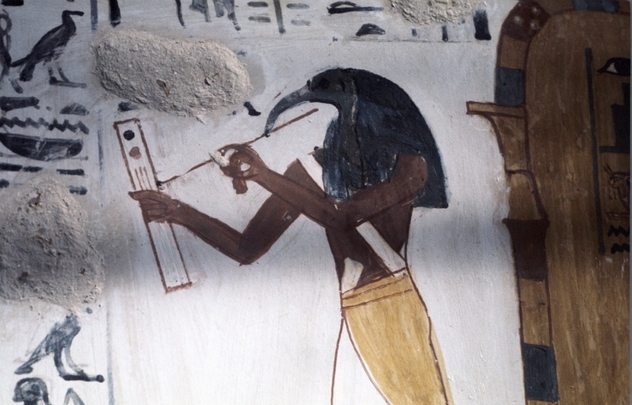
Being a scribe has something of a bad reputation, but it’s usually medieval scribes and monks that we hear about, spending hour after hour, day after day, painstakingly copying texts and putting in some pretty amusing marginalia to pass the time. But when writing was first created, the ability to do it was much more respected. The abilities of the scribe were even attributed to the ibis-headed god Thoth, who also recorded the verdict each person faced at death—good or evil. The road to becoming a scribe in ancient Egypt was a tough one, but once you were there, you had an immense amount of influence; the tools of the scribe weren’t just relegated to the clergy, but they were important enough that Tutankhamun was buried with his writing tools.
Since not everyone could read and write, scribes were an integral part of Egypt’s life, and they had access to an immense amount of information. Professional scribes weren’t just copying Biblical texts, they were writing personal letters, wills, diplomatic correspondence, and just about everything in every part of the realm, whether it was economic, personal, religious, or something else entirely. It’s suggested that of all the professions, the ancient Egyptian scribes were the ones who knew all of what was going on everywhere in the realm.
With the invention of the written word around 3000 B.C., being a scribe went hand in hand with high rank. There was a scribal hierarchy, where students would start out with the basics of copying words and sentences, and the most learned scribes would be the ones writing in hieroglyphic script rather than the more utilitarian script of everyday business. Those who were extremely good at what they did could rise very high in the government. Amenophis was at the side of several rulers, where he was responsible not just for writing but for organizing the practical side of all military and civilian affairs. From Egypt’s massive construction projects, temples, and statues to their military forces . . . all were organized by scribes.
There’s even an iconic statue of one in the Louvre.
3Abecedarian

Whether you really love learning about letters or really hate learning about letters, there’s a side to being an abecedarian that might be for you. Typically, an abecedarian is someone who is responsible for teaching the alphabet, but it can also be a person who’s learning that alphabet. They’re the ones that teach the basics, everything that’s crucial for higher learning.
But, if you hate learning, you might also want to become a different kind of abecedarian. In 1522, Nicholas Storch began to preach a radical sort of Christianity. According to Storch and his supporters, the only knowledge that a truly God-fearing person should have was knowledge that comes straight from God, who would deliver that knowledge through visions, voices, and otherworldly means. Knowledge that was gained through mankind was nothing short of sinful, and in order to remain pure and open to God’s word, people needed to turn their back on any kind of Earthly learning whatsoever.
According to the doctrine, they even needed to be unfamiliar with the first three letters of the alphabet—an idea that, weirdly, gave the extreme sect their name. While the Bible contained everything that anyone could possibly want to know to lead a good, virtuous life, reading it yourself was blasphemous and only contorted the word of God. Studying theology was even worse. So if you desire a life where not studying is in your job description, try being an abecedarian.
2Bardi

The bardi were a division of druids that were held in the highest reverence. Rather than being strictly religious members of the druids, the bardi were poets and storytellers, the British equivalent of magi. They were the educated ones that often came from the best families and were responsible for teaching the children of nobility and chieftains. While there’s a lot about the druids that we don’t know, we do know that there were three distinct groups within their religious realm. The druidae were the religious leaders, the priests, and those who sat in judgment when needed. The vates were the seers and the fortune-tellers. The bardi were the storytellers.
In other words, the bardi had all the benefits of being a druid, without the necessity of reading entrails (or worse) as the seers did. The vates had a number of different methods for reading the future, and some were well beyond gruesome. According to some records on tribes from Gaul, a sacrificial victim was stabbed in the stomach, and the future was read by the way his body convulsed and bled as it died and by the pattern that his blood made as it ran. The bardi, on the other hand, were musicians and poets, whose main tasks included recording the great deeds and actions of their clan’s heroes, preserving their people’s genealogy, and teaching the younger generation.
In some areas, the bardi also had powers of divination but were proficient in very specific spells and charms. They were associated with the collection of snakes’ eggs and were said to have particular strengths in knowing when, how, and under which phase of the Moon to gather eggs, which would be used as charms to gain the favors of royalty.
1Ale-Conner

Four ale-conners are still appointed every year in London, but it’s now a ceremonial appointment rather than an actual job. Which is too bad, because anyone who likes beer would love to be an ale-conner.
There are a couple of different versions of just what the position entailed. Beginning in the 1300s, ale-conners were appointed government officials who were responsible for making sure pubs and taverns were selling beer that was fit for consumption. If the beer they were pouring wasn’t good enough, they’d find themselves in court for their low-quality beverages. Ale-conners were also responsible for making sure drinks were being sold at an approved price; in some areas, it was fixed across the jurisdiction. It was a serious job, one that appointed officials swore to do well. “So God help you and the saints,” went the oath they took before stepping into office.
While it’s most likely that ale-conners were testing the quality of local ale in the rather traditional way, there’s a great legend that’s grown up around the occupation. According to the story, their uniform would include leather pants. (The ale-conners of today still wear leather pants as a nod to the story.) Going into a tavern, they’d ask for a pint and pour a bit of it on the seat. They’d then sit in it for the next 30 minutes and then try to stand. If they could stand, the ale was good. If they stuck to the seat, though, that meant there was too much sugar in the beer—which meant that fermentation hadn’t finished, and it was a vastly inferior product with a lower alcohol content.
Regardless of the legends, the ale-conner really did have a hugely important role in English society. By the time Henry V came to power in 1413, brewers would summon an ale-conner when they needed a new batch approved by putting an ale-stake in front of the building. The ale-stake turned into such a symbol of fine alcoholic beverages that the stakes kept getting bigger and bigger, until ordinances had to be put in place to make sure ale-stakes were kept under a certain size, as they’d begun interfering with traffic patterns in front of taverns and breweries. It was only after the ale-conner had inspected the brew that it could be sold—with or without restrictions, as he saw fit for the quality of the beer.








